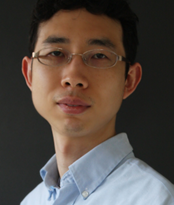| Biography | |
|---|---|
 Prof. Alex Hay-Man Ng Department of Surveying Engineering, Guangdong University of Technology, China |
|
| Title: Guangzhou-Foshan subway tunnels and highways monitoring using InSAR | |
| Abstract: The Greater Pearl River Delta (GPRD), one of the largest urban agglomerations and fastest-growing urban regions of the world, is one of the main hubs of China’s economic growth. Guangzhou and Foshan are two of the main mega-cities in the GPRD. The development in these cites has growth rapidly in the past few decades. This rapid growth in population along with the city development has significantly increased the pressures on transport systems. The increased in demand in highway usage and underground subway network expansion puts the local population under a greater risk of environmental problems, particularly land subsidence.For example, tens of buildings in Jinshazhou at Guangzhou were damaged by the subsidence caused by underground construction of the high-speed railway underground project, resulting in an economic loss of 30 million RMB (currency of People’s Republic of China). Therefore, it is important to monitor the transport system in Guangzhou and Foshan cities. Synthetic Aperture Radar Interferometry (InSAR) is an alternative technique to obtain measurements of land displacement with high spatial resolution, large spatial coverage and comparable accuracy. In this work, we report the land deformation results between 2011 and 2017, obtained by analysing the high resolution COSMO-SkyMed (CSK) data, in the city of Guangzhou and Foshan.Eighty-six X-band CSK HIMAGE SAR images in strip map mode are processed using the GEOS-ATSA software for InSAR time-series analysis (TS-InSAR). According to the result, it is found that the surface displacement at these cities is mostly within the range between -35 mm/year and 10 mm/year. By comparing the CSK result with the historical ENVISAT results and levelling data, a board agreement between datasets have been observed, suggesting that localised subsidence phenomena occurs at different locations in Guangzhou and Foshan. A comparison between different landuse types and the TS-InSAR time-series result has also been conducted. However, no clear relationship has been observed. The local scale deformation zones have been analysed in order to understand the causes of the deformation. It is found that majority of deformations is related to excessive groundwater extraction for agricultural and industrial purposes but subsidence in areas of subway construction and highways also occurred. Furthermore, a detailed analysis on the sinkhole collapse incidents occurred in early 2018 has been conducted. It is found that the surface loading along the busy highway maybe a controlling factor of the subsidence. It is necessary to continue to monitor the magnitude and spatial pattern of the evolving deformations inthe identified deforming areas in order to minimise the risk and hazards of land subsidence. | |
| Biography: ACADEMIC QUALIFICANTIONS Doctor of Philosophy 2011 School of Surveying and Geospatial Engineering, The University of New South Wales (UNSW)
Master of Engineering Science 2005 School of Electrical Engineering, UNSW
Bachelor of Electrical Engineering 2004 School of Electrical Engineering, UNSW
ACADEMIC EMPLOYMENT HISTORY Associate Professor / Professor 12/2016 – present Department of Surveying Engineering, Guangdong University of Technology, China PR
Visiting Fellow 1/2017 – present School of Civil and Environmental Engineering, UNSW
Postdoctoral Research Associate School of Civil and Environmental Engineering, UNSW 4/2013 – 2/2016 School of Surveying and Geospatial Engineering, UNSW 11/2010 – 3/2013
Research Assistant School of Surveying and Geospatial Engineering, UNSW 12/2006 -11/2010
Field of research: InSAR-related algorithm design;InSAR software development;application of InSAR for underground mining activity and hazard monitoring, modeling, and deformation mapping. | |
